US Marine Economy Worth $432 Billion in 2021

America’s marine economy contributed $432 billion in economic impact in 2021, making up nearly 2% of the nation’s gross domestic product (GDP).That is according to the most recent statistics from the annual Marine Economy Satellite Account released by two Department of Commerce agencies —NOAA and the Bureau of Economic Analysis (BEA). The marine economy statistics include activities in the US ocean, coasts and major water bodies such as the Great Lakes, Puget Sound and Chesapeake Bay.From 2020 to 2021…
Blue Economy Contributes $361 Billion to US GDP
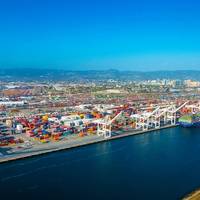
America’s marine economy contributed about $361 billion of the nation’s gross domestic product in 2020. That is according to the most current results of the annual Marine Economy Satellite Account released today by two Department of Commerce agencies, NOAA and the Bureau of Economic Analysis (BEA).These numbers are from the first year of the coronavirus pandemic and represent a 5.8%, or $23 billion, reduction in real terms (adjusted for inflation) from 2019, outpacing the general…
Marine Economy Contributes Nearly $400 Billion to US GDP
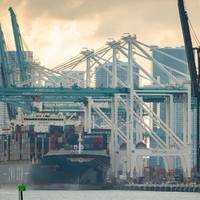
America’s marine economy contributed about $397 billion to the nation’s gross domestic product in 2019 and grew faster than the nation’s economy as a whole, according to the most current results of the first official Marine Economy Satellite Account released today by two Department of Commerce agencies.“America’s strong marine economy is absolutely vital for building back better,” said Secretary of Commerce Gina M. Raimondo. “President Biden sees the immense value and potential of strengthening America’s blue economy…
US' Marine Economy Growth Outpacing the Nation's
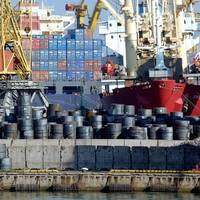
America’s marine economy, including goods and services, contributed about $373 billion to the nation’s gross domestic product in 2018 and grew faster than the nation’s economy as a whole, according to the marine economy statistics released today by two Department of Commerce agencies.“These statistics are the first-of-its-kind estimate of the U.S. marine economy, a primary driver of jobs, innovation and economic growth,” said retired Navy Rear Admiral Tim Gallaudet, Ph.D., assistant secretary of commerce for oceans and atmosphere and deputy NOAA administrator.
U.S. Ports Plan Big Investments in Capital Projects - Survey
Survey Shows U.S. Ports Plan Big Investments In Capital Projects. In its just-released 2016-2020 Port Planned Infrastructure Investment Survey, the American Association of Port Authorities (AAPA) – the unified and recognized voice of seaports in the Americas – asked its U.S. member ports how much they and their private-sector partners plan to spend on port-related freight and passenger infrastructure over the next five years. The answer was a whopping $154.8 billion. AAPA then contrasted that number with what it believes is the “best-case” scenario for investments by the federal government into U.S. ports, including their land- and water-side connections, through 2020. The answer was just $24.825 billion.
US Ports Planning Big Investments -Survey

Survey shows U.S. In its just-released 2016-2020 Port Planned Infrastructure Investment Survey, the American Association of Port Authorities (AAPA) asked its U.S. member ports how much they and their private-sector partners plan to spend on port-related freight and passenger infrastructure over the next five years. The answer was a whopping $154.8 billion. AAPA then contrasted that number with what it believes is the “best-case” scenario for investments by the federal government into U.S. ports, including their land- and water-side connections, through 2020.
US Ocean Economy Sees Large Growth -NOAA

In 2012, U.S. The U.S. ocean economy outpaced the domestic economy between 2011 and 2012, with an increase of $22 billion in gross domestic product, from $321 billion to $343 billion, according to a new National Oceanic and Atmospheric Administration (NOAA) analysis. Adjusting the figures to remove the effects of inflation, this increase equates to a 10.5 percent rate of growth—more than four times as fast as the U.S. economy as a whole. The report is based on 2012 U.S. national economic statistics released in August 2014.
NOAA Reports 2011 Ocean, Great Lakes Economy Data
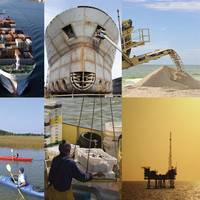
NOAA’s newest output includes a feature on economics. The National Ocean Watch site features facts, charts, story maps and videos. It turns out that our maritime economy – commercial, recreational and everything in between – really matters. In 2011, the U.S. Ocean and Great Lakes economy produced $282 billion in goods and services and employed 2.2 percent of the nation’s workers—that’s more than twice the percentage of workers in the U.S. agriculture industry. This fact and many others are featured in a 2011 data summary from Economics: National Ocean Watch (ENOW)…
NOAA Data Reveals Weight of Ocean and Great Lakes Economy
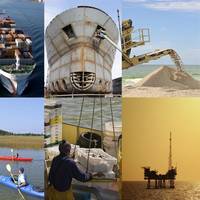
In 2011, the U.S. ocean and Great Lakes economy produced $282 billion in goods and services and employed 2.2 percent of the nation’s workers—that’s more than twice the percentage of workers in the U.S. agriculture industry. This fact and many others are featured in a 2011 data summary from Economics: National Ocean Watch (ENOW), a product of the National Oceanic and Atmospheric Administration (NOAA) Coastal Services Center. County-level facts, charts and maps highlighting the 2011 data findings are found on the “Ocean Jobs” and “Wetland Benefits” tabs of the Coastal County Snapshots tool.
Globalization Keeps Future Bright for Shipping
The economic storm signals are all around us: the wild swings in stock markets globally, the contraction of credit availability worldwide and the frequent use of the dreaded “R” word. Is the United States headed for a deep recession? Is a recession already under way? Will the slowing U.S. economy drag the rest of the world’s countries into recession as well? It’s enough to make those of us either in or aligned with the maritime industry wonder what the future holds. Should we batten down the hatches, yet proceed full speed ahead to ride out what may be a temporary squall? Or should we be looking for the shelter of a safe harbor until the worst of the storm passes? In the insurance industry, we have confidence about what lies ahead for the shipping industry.





